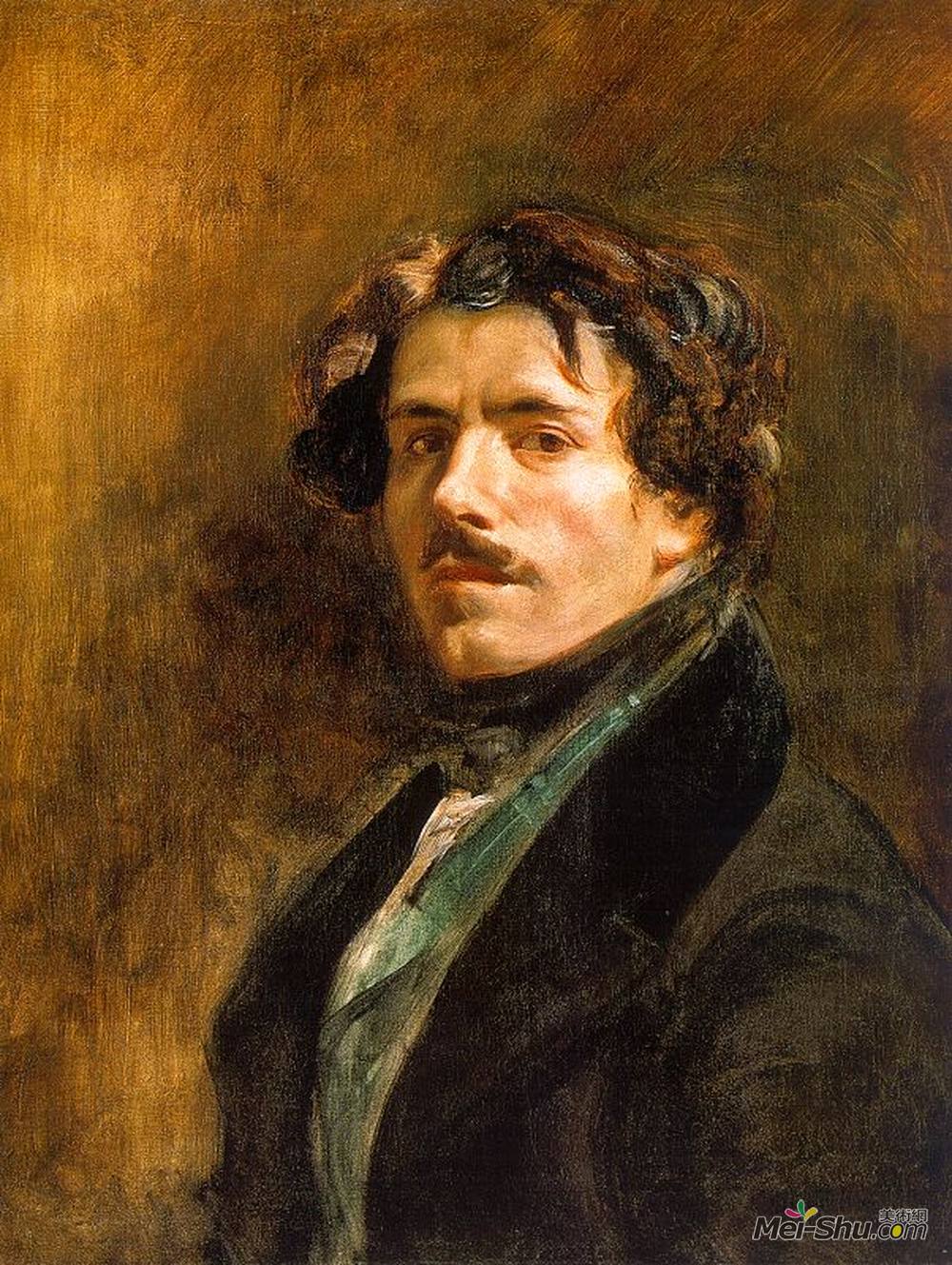
欧仁·德拉克罗瓦(Eugene Delacroix)
艺术家: 欧仁·德拉克罗瓦
生于: 1798年4月26日;查宁顿(圣毛里斯,Val-de-Marne),Ile de France法国
卒于: 1863年8月13日;法国巴黎
国籍: 法国
流派: 浪漫主义
领域: 绘画,光刻
受影响: 埃尔·格列柯,卡拉瓦乔,约翰·康斯特布尔,泰奥多尔·席里柯,彼得·保罗·鲁本斯,Venetian School,理查德·帕克斯·伯宁顿,保罗·委罗内塞,丁托莱托,安托万·让·格罗
影响: 保罗·高更,埃德加·德加,皮耶尔·奥古斯特·雷诺阿,爱德华·马奈,Impressionism,卡米耶·柯罗
老师: Pierre-Narcisse Guerin
朋友: 泰奥多尔·席里柯
机构: 美术学院、法国巴黎美术学院,巴黎,法国
尤金·德拉克洛瓦被认为是法国浪漫主义画派的领袖,是一位多产的艺术家,一生创作了9000多件作品,从绘画到水彩画、粉彩画和绘画。他的作品塑造了印象派艺术家,启发了象征主义运动。从彼得·保罗·鲁本斯和威尼斯文艺复兴时期的画家那里获得灵感,他的绘画风格强调色彩和运动,而不是精心塑造的形式和清晰的轮廓。在完成艺术教育后,他于1822年提交了第一部作品《但丁巴克巴黎沙龙》,该作品被接受。第一件作品引起了轰动,受到严厉的批评,但卢森堡美术馆却遭到了政府的严厉批评。这是他职业生涯中受到批评的一种模式。首先,他的作品受到批评,但后来被国家或个人赞助人接受和购买。他的作品围绕着许多主题展开,其中许多主题受到莎士比亚、歌德和拜伦作品的启发,并带有暴力和感性的主题。也许他最广为人知的一部分是领导共和国的自由,它唤起了领导人民的自由形象。法国政府最初画了这幅画,但很快就认为它太不利于建立,并使它从视野中消失。1832,他前往摩洛哥逃离巴黎社会,体验一种更原始的文化。他在这里的创作灵感超过100幅画,他把那里的人比作罗马或希腊的早期公民。也许德拉克洛瓦个人生活中最丑闻或值得注意的方面是,他最有可能是法国外交官塔利兰的私生子,因为他父亲从未怀过其他孩子。在他父亲和母亲都去世后,在他16岁时留下一个孤儿,他在法国人的保护下度过了一生的大部分时光。他的遗产包括一些肖像画、风景画和人物画。他还帮助发现了法国国家艺术博览会,以及其他著名的法国艺术家的一天。他的脸在2003岁的法国钞票上显露出来。
Artist :Eugene Delacroix
Additional Name :Ferdinand Victor Eugène Delacroix
Born : Charenton (Saint-Maurice, Val-de-Marne), Île-de-France, France
Died : Paris, France
Nationality :French
Art Movement :Romanticism
Field :painting,lithography
Influenced by :el-greco,caravaggio,john-constable,theodore-gericault,peter-paul-rubens,artists-by-painting-school/venetian-school,richard-parkes-bonington,paolo-veronese,tintoretto,antoine-jean-gros
Influenced on :paul-gauguin,edgar-degas,pierre-auguste-renoir,edouard-manet,artists-by-art-movement/impressionism,camille-corot
Teachers :pierre-narcisse-guerin
Friends and Co-workers :theodore-gericault
Art institution :Académie des Beaux-Arts, Paris, France,École des Beaux-Arts, Paris, France
Considered the leader of the French Romantic school of painting, Eugene Delacroix was a prolific artist, producing over 9,000 works during his lifetime, ranging from paintings, to watercolors, pastels and drawings. His work both shaped the Impressionist artists and inspired the Symbolist movement. Taking inspiration from Peter Paul Rubens and the Venetian Renaissance painters, his painting style emphasized colors and movement rather than the carefully modeled form and clear outline. After completing his education in art, he submitted his first work the Paris Salon The Barque of the Dante, which was accepted, in 1822. This first piece caused a sensation and was harshly criticized, but it was nonetheless bough by the State for the Luxembourg Galleries. This began a pattern of his critical reception throughout his career. First, his work was criticized, but later accepted and purchased by the state or personal patron.
His works revolved around many themes, many of which were inspired by the works of Shakespeare, Goethe, and Byron, and entailed the motifs of violence and sensuality. Perhaps his most widely know piece is Liberty Leading the Republic, which invoked the image of liberty leading the people. The French government initially bough the painting, but soon deemed it too anti-establishment, and had it withdrawn from view. In 1832, he traveled to Morocco to escape Paris society, and experience a more primitive culture. His time there inspired over 100 paintings, and he compared the people there to the early citizens of Rome or Greece.
Perhaps the most scandalous or noteworthy aspect of Delacroix’s personal life was the fact that he was most likely the illegitimate child of Talleyrand, a French diplomat, as his father never conceived any other children. After both his father and mother died, leaving him an orphan at the age of 16, he spent much of life under the protection of the Frenchman. His legacy includes a number of portraits, landscapes, and figure paintings. He also helped found the Societe Nationale des Beaux-Arts, along with other notable French artists of the day. His face was featured on the French banknote, minted in 2003.